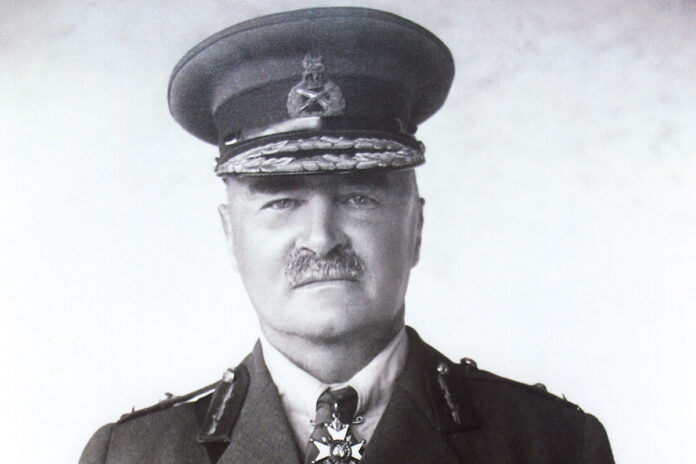Despite the appalling casualties in WWI, during 1914-18, the year 1918 represented extraordinary feats of military victory by British Commonwealth forces in France and Belgium.
The actions of the Australian Corps (about 109,000 Australian soldiers and airmen) under Lieutenant-General John Monash from 8 August to mid-October 1918 – the One-Hundred Days – were extremely important in defeating the German Army.
Old Melburnians (OMs) played a significant role in these events, just examining France and Belgium. Grammar News August 2018 featured Lieutenant William Donovan Joynt (OM 1904) whose VC was awarded for actions in August 1918 at Herleville in the aftermath of the decisive Battle of Amiens.
Brigadier-General Harold Grimwade (OM 1883) (later Major-General, and one of the donors of Grimwade House) commanded the 3rd Division Artillery through the great battles of 1918. He took over command of all of the artillery in the Australian Corps in November 1918, headquartered at Bertangles, in the department of the Somme.
One of the military planners for the 1918 offensives was Lieutenant-Colonel Vernon Sturdee (OM 1905). Sturdee was one of the only Australians seconded to the British General Headquarters (GHQ) of the British Expeditionary Force (BEF) under Field Marshal Haig – a most significant tribute to Sturdee’s military abilities. Sturdee had commanded the Engineers of the 5th Australian Division but in March 1918 he began work at the British GHQ. Sturdee was later a Lieutenant-General (and knighted) and the professional head of the Australian Army – the Chief of the General Staff – in two stints: 1940-42 and 1946-50.
Major Basil Morris (OM 1907) – later a Major-General – commanded a Howitzer Battery (artillery) during the Australians’ advance to the Hindenburg Line in September and October 1918. He was to be awarded the Distinguished Service Order (DSO). Another officer recognised for gallantry was Lieutenant (later Captain) C.A.M. Derham (OM 1903) of the 29th Infantry Battalion, awarded a Military Cross (MC) in 1918 for his actions the previous year. He was later an important leader in the food industry.
Parents connected with the School also played a major role in 1918. The father of Charles Blamey (OM 1926) and Thomas Blamey (OM 1932) was Brigadier-General (later Field Marshal Sir) Thomas Blamey. Blamey played a very important role in the 1918 offensives as Monash’s Chief-of-Staff – effectively Monash’s deputy and his chief planner and staff officer.
One of Blamey’s key principal staff officers in 1942, as Director-General of Army Medical Services, was Major-General Sir Samuel Roy Burston (OM 1903) who in 1918 was a Lieutenant-Colonel (DSO) in France commanding medical services at the Australian General Base Depot at the port of Le Havre and the 1st Australian Convalescent Depot. He was promoted Colonel later in 1918, running major Army hospitals for wounded Australian soldiers. Even the School Headmaster, Lieutenant Richard Penrose Franklin, took war service leave and embarked in April 1918 for service in France with the Artillery.
Of course, many OMs served in 1918 in theatres of war other than France. For example, Major (later Lieutenant-General Sir) Edmund Herring commanded an artillery battery in the Salonika campaign, and OMs served in the Palestine-Syria campaign where Australian and Commonwealth forces captured Damascus in October 1918. There were many OMs and members of the School community involved in the great military campaigns of 1918 – and their stories (in France, the Middle East and elsewhere) are captured in The War Services of Old Melburnians 1914-1918 by J. Beacham Kiddle.
Graeme Sligo (OM 1977)
ABOUT GRAEME SLIGO
Graeme Sligo was Captain of School in 1977. Graeme served in the Australian Army for 36 years – nine years of this overseas, leaving as a Colonel. He has written a book on WWII and post-war Australia – The Backroom Boys (2013).



